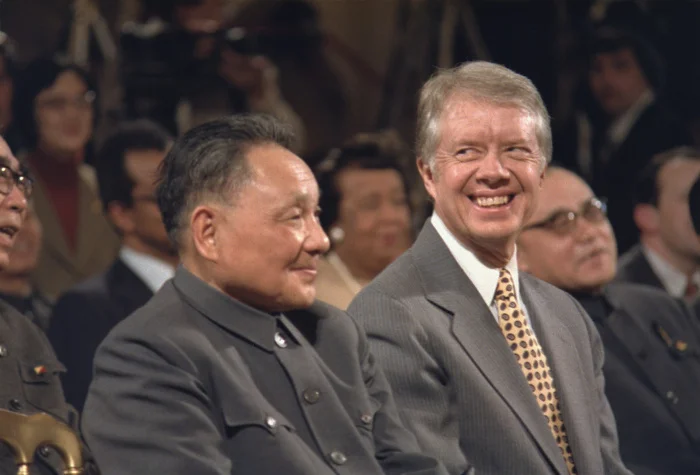The rising IP dragon of China
“Filing in China is a must.”
Why to protect (or even invent) any kind of technology or solution if the Chinese will instantly copy them anyway – we can hear that quite often in the field of intellectual property. Is it really true, or is this just the complaint of those who do not put the slightest efforts into protecting their ideas and then are being outrageous that public knowledge is used? In today’s IPintz article we look into that matter.
Recently a conference organized by IPkey was held in the Hungarian Intellectual Property Office whose main goal was to provide detailed information about the Chinese patent system. Lectures were held by Liu Jian, vice director general of the Chinese State Intellectual Property Office (SIPO), Zhou Houbing, patent examiner and Giovanni Casucci, Italian partner in the IPkey initiation. We will look over the Chinese IP system by using their presentations.
I. The rise of the IP system in China
The introduction of a patent system was very much out of the question until the seventies. The planned economy ruled out any kind of monopoly, the invention automatically could be used by the commune and the state.
Under the leadership of Deng Xiaoping, the political and economical environment underwent drastic changes. Faced with international hostility, he focused on developing the nation’s economy.
Reforms were introduced in order to allocate more foreign investments which would not have been possible without an effective intellectual property system.
Deng Xiaoping with US president Jimmy Carter
Eventually, different laws were drafted to protect intellectual property:
- Trademark Act: 1983
- Patent Act: 1985
- Copyright Act: 1991
- Competition Act: 1993
- Software Act: 2001
The People’s Republic of China joined the WIPO in 1980, the PCT Agreement in 1994 and the TRIPS agreement in 2001.
The most important institution in the field of IP is the above mentioned SIPO which was founded in 1980. This office handles examining patent and design applications, all international aspects of intellectual property, supervises the activities of other IP related government institutions, drafts reports and long term strategies.
The Chinese symbols for “invention”
The amount of intellectual property related rights can be measured via the following numbers. The Chinese office received 2.36 million applications from which 928 000 were classic patent inventions. There exist 2,28 million registered trademarks and the mortgage burdened on intellectual property rights as much as 10 billion US dollars.
II. Filing a patent application in China
There is not much difference between the European patent systems and the Chinese one. The SIPO also conducts a preliminary examination and the application is published after 18 months. Requirements for patentability are the same, and the scope of protection cannot be extended after filing the application. Foreign applicants must give authorization to a Chinese representative.
The Chinese know one or two things about protection
In case of design patents it is a remarkable difference that this kind of exclusivity can be gained only for ten years (not renewable) and the novelty requirement is stricter than in European jurisdictions.
It is important to note that until the famous case of Chint v. Schneider (2007), novelty requirement was only assessed in relation to what has been disclosed inside China. Inventions that became public outside of China could be patented in the country. Thus Schneider committed patent infringement with his own products that were registered in China by Chint. As a result, the patent act was amended and since then the novelty requirement is assessed on a World level in compliance with international standards. However, the new requirement does not apply to granted patents, so the above described situation can theoretically occur until 2027.
III. Exploiting and enforcing patent rights in China
A patent’s rate of return is mostly determined by two factors, namely the expected income and the enforcement of patent related rights. Considering just the population size of China, especially in case of mass products, the expected income should not be a problem in case of a viable invention. On the other hand, enforcing rights should not be considered as a new investment but the final part of a bigger investment for R & D and marketing expenses not to turn to waste.
Enfrorcing the patent is just as important as the invention itself
The Chinese law is also familiar with the compulsory license. This is similar to European solutions, however a license can be granted if the patent holder acts in bad faith e.g. demands unnecessarily high fees.
A massive leap forward was when the Beijing IP Court was established and soon followed by the ones in Guangzhou and Shanghai.
Cases are decided within one and a half year. If an infringement case is started and the defendant starts an invalidity action, the earlier case is suspended. Guidelines issued by higher courts ensure the consistency of judicial decisions.
The patent owner is even in a better situation than in Europe, where if he cannot prove his damages accurately, the chance of restitution is not considerably high, whereas in China, the court can adjudicate a sum between ¥ 100 000 – 5 000 000 based examining the circumstances of the claim.
Though China has some aspects of his legal system that has to be improved, and even the image of mass manufacturing Adias shoes with four stripes is not completely behind us yet, enforcing your IP rights requires no more effort than the same in your country.
Dr. Marton Csirik & Adam Szalai
Pintz & Partners





